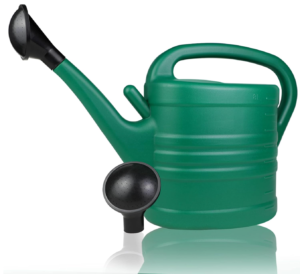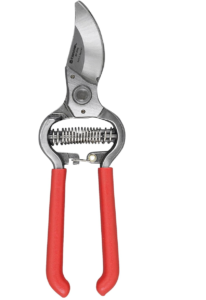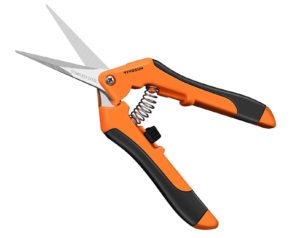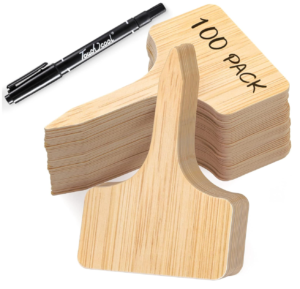Indoor gardening necessitates the use of specific tools to ensure that plants flourish in a controlled environment, making certain implements essential for effective maintenance and care.
Key items such as:
- watering cans
- hand pruners
- planting pots
- gardening scissors
- plant labels
All play a vital role in facilitating a successful indoor gardening experience. A high-quality watering can like those from Flexzilla is critical for delivering the appropriate amount of moisture to plants, while hand pruners from brands like Felco F-2 are critical for maintaining plant health through regular trimming and shaping. Planter Bags can help in properly organizing plants. Selecting the most suitable tools designed for indoor gardening can significantly enhance an individual’s capacity to nurture plants effectively.
Affiliate Disclosure: Some of the links on this website are affiliate links, meaning, at no additional cost to you, we may earn a commission if you click through and make a purchase
Watering Can
Among the must-have tools for indoor gardening, a high-quality watering can is indispensable. Brands like Flexzilla offer durable and ergonomic designs that make watering easy and efficient.
A watering can is an essential tool for indoor gardeners, facilitating precise moisture delivery to plants while avoiding issues of over-saturation and mess.
When selecting an appropriate watering can, it is important to prioritize features that enhance functionality and user comfort. Key aspects to consider include:

- Capacity: Select a size that aligns with your available space and the number of plants you care for. Consider options like heavy duty planter bags for larger plants.
- Spout Length and Design: A long, narrow spout provides improved access to hard-to-reach areas.
- Weight: Opting for a lightweight design facilitates easier maneuverability, particularly when the can is filled with water.
Proper watering is crucial for the health of indoor plants, as it prevents complications such as root rot and ensures adequate nutrient absorption. Therefore, a watering can serves not merely as a tool but as an critical companion for every indoor gardener.
Understanding how to use this tool effectively contributes to establishing a routine that promotes the thriving and vitality of plants.
Hand Pruners
Hand pruners are essential tools for indoor gardening, designed to facilitate precise cuts that maintain both the health and aesthetic appeal of indoor plants. They are particularly effective for trimming overgrown stems, removing dead foliage, and promoting bushy growth by encouraging branching.
Ergonomically designed hand pruners allow gardeners to perform these tasks with minimal strain, ensuring a comfortable experience during regular maintenance.
In the field of indoor gardening, various types of hand pruners are available to meet specific needs and preferences. The most prevalent types include:

- Bypass Pruners: These pruners create clean cuts through stems, utilizing a blade that slides past a stationary blade, making them suitable for live stems.
- Anvil Pruners: Featuring a single sharp blade that presses against a flat surface, these pruners are more effective for cutting through dead wood and tougher materials. Handy snippers and ratchet pruners can also be useful for similar tasks.
- Micro-Shears: Ideal for delicate plants, these small tools provide precision for intricate pruning and deadheading tasks.
Regular pruning is advantageous not only for the visual appeal of plants but also for their overall vitality, promoting healthier growth and preventing diseases. This practice enhances air circulation and light penetration within the foliage, thereby contributing to the plants' flourishing condition.
Planting Pots
Selecting appropriate planting pots is essential for indoor gardening, as they significantly impact plant health through effective drainage and sufficient root space. Consider using slate plant labels to keep track of your plant's needs.Available in a variety of sizes and materials, pots with adequate drainage holes facilitate the escape of excess water, thereby preventing root rot and promoting healthy growth. It is important for the size of the pot to align with the plant's growth stage, ensuring ample room for root expansion.
When investigating options for planting pots, one will encounter several types that cater to different aesthetic preferences and plant requirements. Common materials include:

- Clay: Traditional terracotta pots provide breathability, making them ideal for plants that require good airflow to their roots.
- Ceramic: Glazed ceramic options offer an elegant appearance and retain moisture, making them suitable for humidity-loving plants.
- Fabric: These breathable pots facilitate root pruning, which can promote healthier growth for specific plant varieties. Options like heavy duty planter bags are also available for larger, more robust plants.
In selecting a pot, it is crucial to consider the specific needs of your indoor plants. A well-chosen pot not only enhances growth but also ensures the appropriate environment for flourishing greenery.
Gardening Scissors
Gardening scissors are specialized tools designed for precision cutting and detailed maintenance of indoor plants. Unlike general-purpose scissors, these tools are specifically crafted to manage delicate tasks such as snipping back foliage, harvesting herbs, or trimming flower stems without causing damage to the plants. Their compact design facilitates easy maneuverability within indoor gardens, making them a valuable addition to any gardening toolkit.
One of the primary advantages of utilizing gardening scissors over other cutting tools is their capacity to perform specific actions that larger tools cannot achieve. The fine, sharp blades are particularly well-suited for:

- Accessing tight spaces where branches may intertwine.
- Providing enhanced control while executing precise cuts, thereby minimizing the risk of accidents.
- Reducing strain on the user's hands during extended periods of use.
Maintaining these precision tools is relatively straightforward. Regular cleaning of the blades is essential to prevent the spread of disease among plants. Employing a mild disinfectant or simply wiping the blades with rubbing alcohol will ensure they remain hygienic.
Additionally, occasional sharpening of the blades, perhaps with a quality sharpening tool, not only enhances their efficiency but also extends their lifespan, allowing indoor gardening enthusiasts to reap the benefits of their specialized equipment for many seasons to come.
For storage solutions, items like the Keter City Outdoor Storage Box can be incredibly useful.
Plant Labels
Plant labels are essential tools for organizing and identifying various indoor plants, ensuring that each specimen receives the appropriate care it requires. These labels assist gardeners in tracking plant names, care requirements, and specific needs regarding watering and sunlight, thereby promoting effective maintenance and minimizing the risk of neglect.
Investing in durable, weather-resistant plant labels, such as slate or plastic, can significantly enhance the indoor gardening experience by streamlining the plant care routine.

In the realm of indoor gardening, the importance of reliable labels is paramount. They serve as a crucial resource for both novice and experienced gardeners, guiding the management of a diverse array of plants.
Materials such as plastic, wood, metal, and waterproof paper are available, each presenting unique advantages. Plastic labels are particularly durable and moisture-resistant, making them ideal for indoor use. Wooden labels, on the other hand, provide a natural aesthetic while being biodegradable, appealing to environmentally conscious gardeners.
By featuring clear identifiers and care instructions, these labels not only improve the organization of a plant collection but also facilitate knowledge-based decision making regarding watering schedules, soil types, and sunlight exposure. Ultimately, this contributes to the cultivation of thriving indoor gardens.
All these tool are essential for growing a healthy indoor garden, no matter how big or small. Ready to try you green thumb, check out any of the links above and find a product that is right for you.
